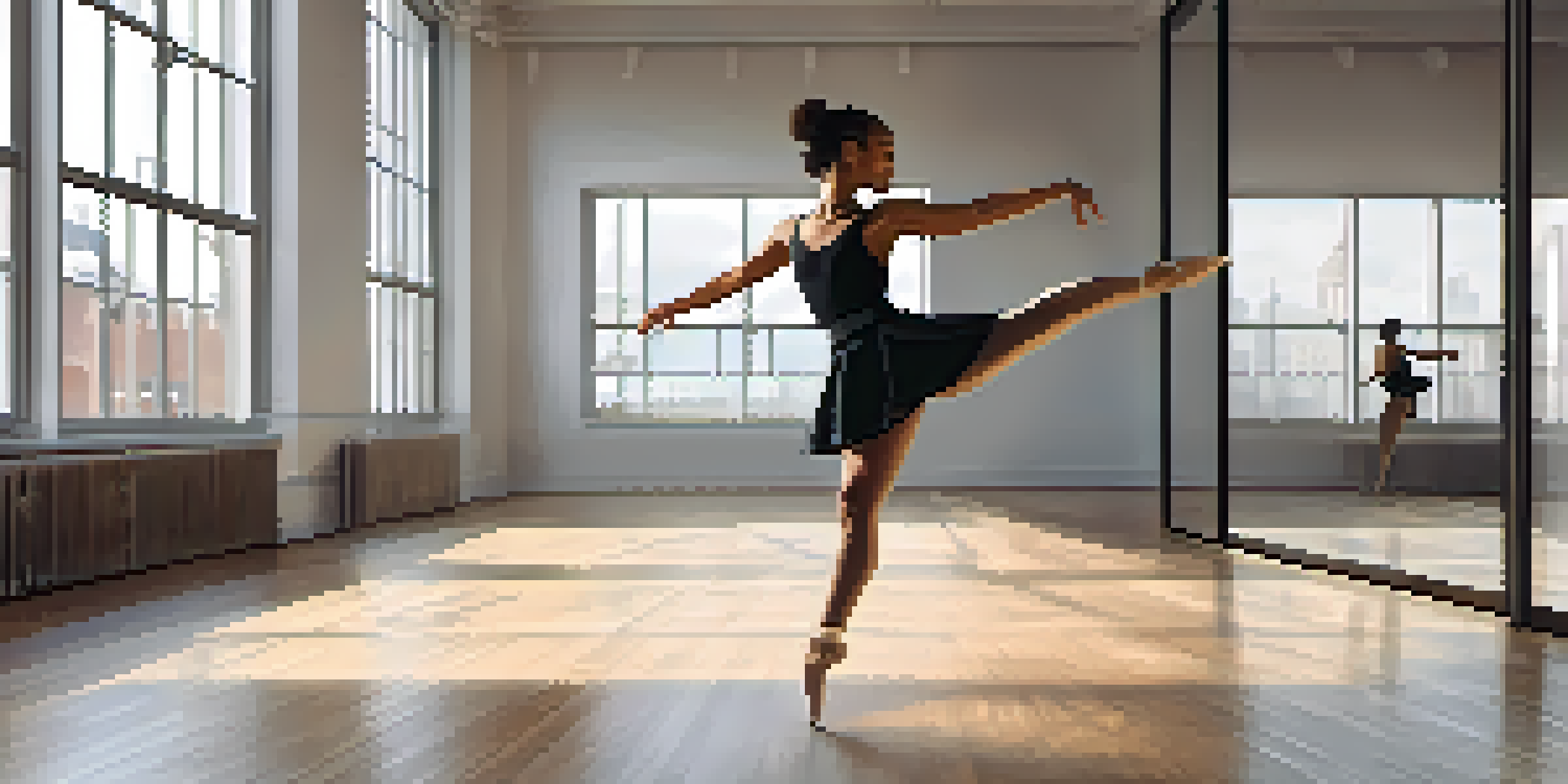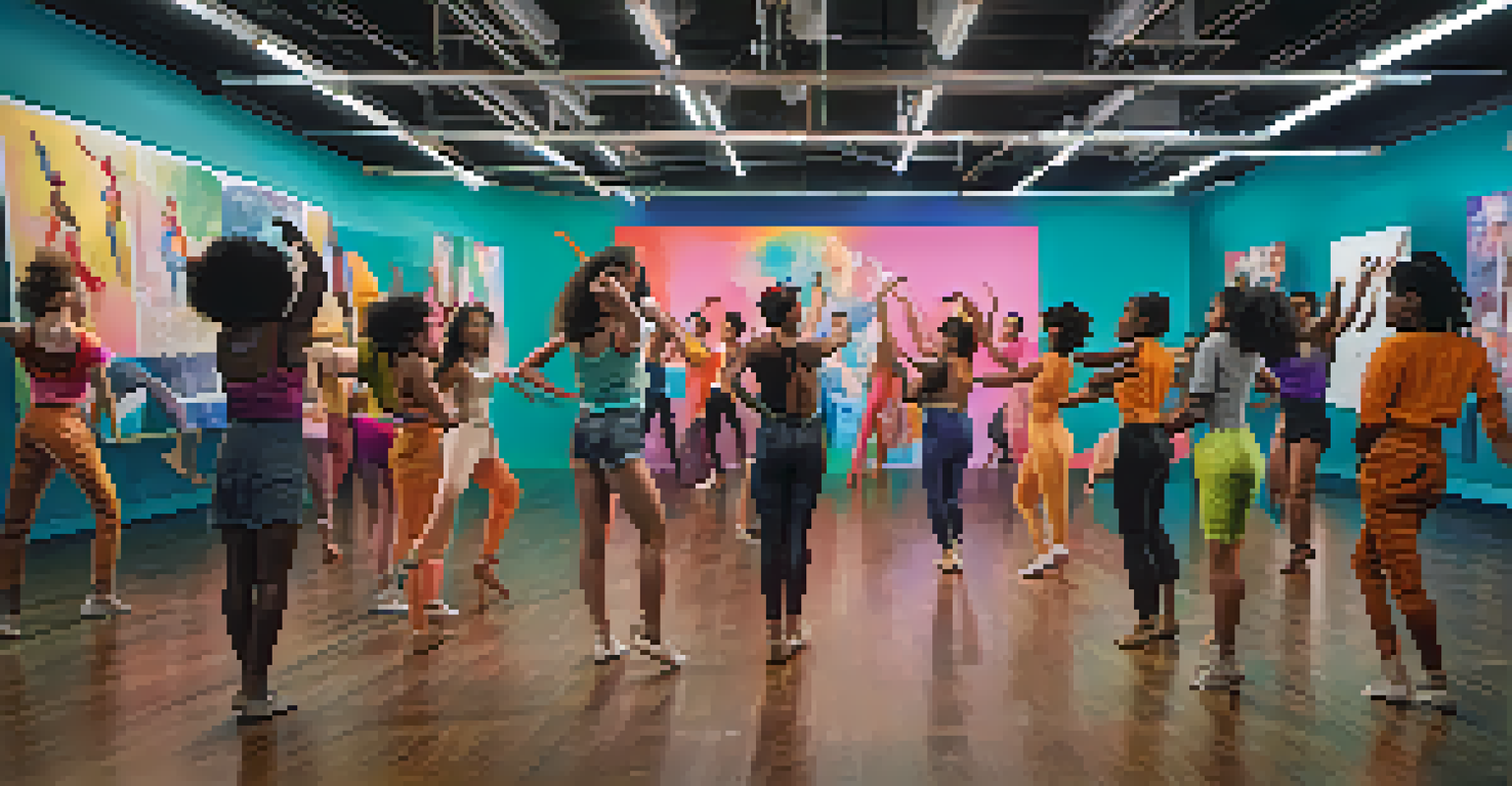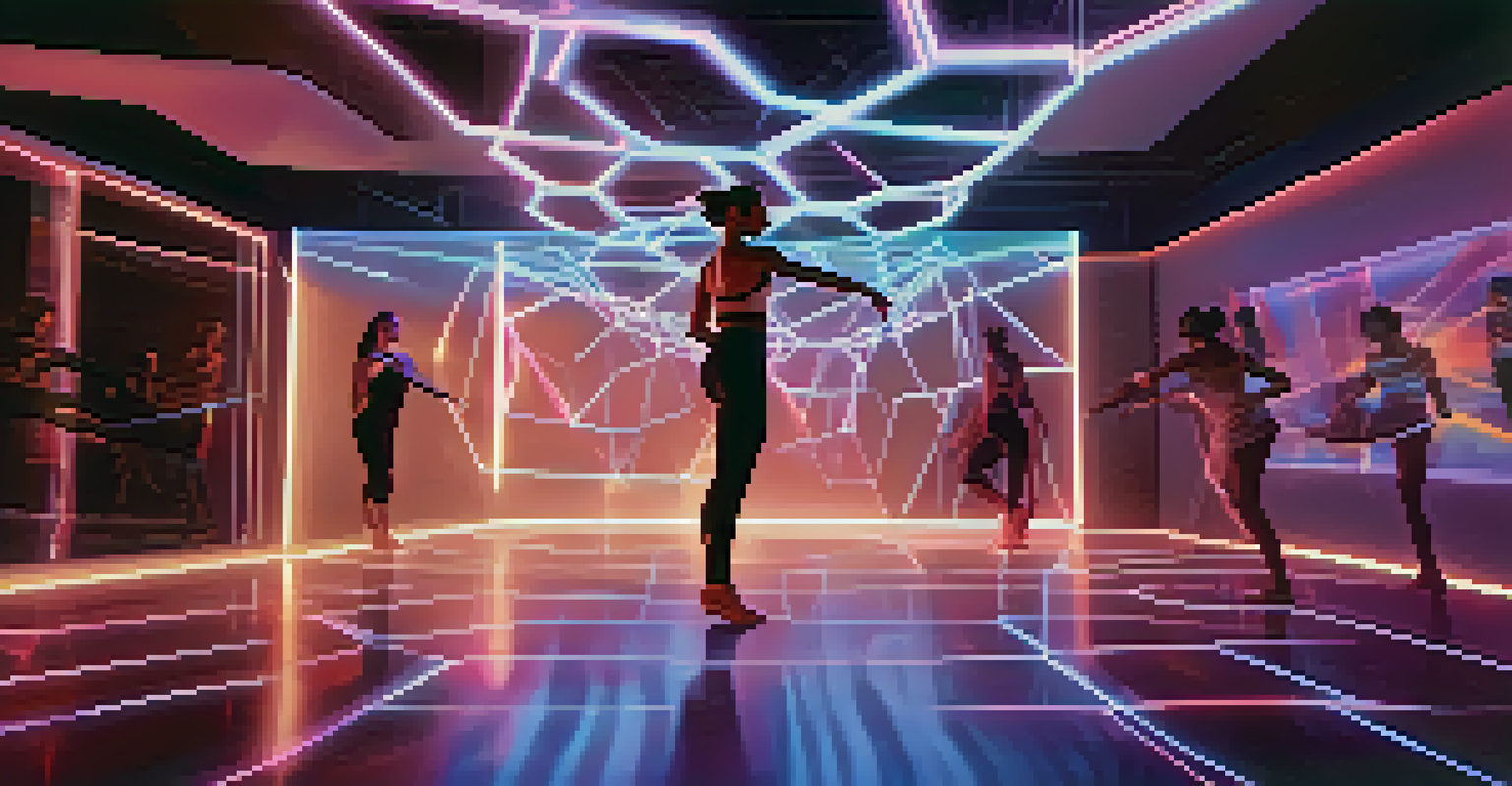Choreography Software: The Future of Dance Creation and Sharing

Understanding Choreography Software and Its Benefits
Choreography software refers to digital tools designed to aid dancers and choreographers in creating, visualizing, and sharing dance routines. These applications range from simple notation software to advanced 3D modeling programs that allow users to animate their choreography. The primary benefit of such tools is the ability to streamline the creative process, making it easier to capture and refine ideas without the need for extensive rehearsal time.
Dance is the hidden language of the soul.
One of the standout features of choreography software is its capacity for collaboration. Dancers from different locations can contribute to the same project, making it a powerful tool for creating group pieces or even large-scale performances. This collaborative aspect not only enhances creativity but also helps build a sense of community among dancers, who can share feedback and ideas in real-time.
Additionally, choreography software often includes features like video integration, which allows users to analyze their movements and improve their technique. By viewing their performances from various angles, dancers can identify areas for improvement and refine their skills. This blend of technology and artistry is paving the way for a new era in dance creation.
The Evolution of Dance Creation Tools
The journey of dance creation tools has evolved dramatically over the years, from traditional pen-and-paper notation to sophisticated digital platforms. In the past, choreographers often relied on their memory or written notes, which could lead to misinterpretations. With the advent of technology, these tools have transformed, allowing for a more precise and visual representation of dance movements.

This evolution has paved the way for innovative choreography software that incorporates elements like motion capture and augmented reality. These advancements enable users to visualize their ideas in a three-dimensional space, creating a more immersive experience. Imagine being able to walk through a dance routine in a virtual studio; that’s the future we’re heading towards!
Choreography Software Enhances Creativity
These digital tools streamline the creative process, allowing dancers to collaborate and refine their routines more efficiently.
Moreover, as technology continues to progress, we can expect even more features to emerge in choreography software. From AI-driven suggestions to personalized training modules, the possibilities are endless, making it easier for dancers to express their creativity and hone their skills.
Enhancing Collaboration in Dance Communities
Collaboration is at the heart of any artistic endeavor, and choreography software has revolutionized how dancers work together. With cloud-based platforms, dancers can share their work instantly, regardless of geographical barriers. This accessibility fosters an inclusive environment where diverse styles and ideas can flourish.
Technology is best when it brings people together.
For example, a choreographer in New York can collaborate with dancers in Tokyo, sharing videos and notes in real-time. This not only enriches the creative process but also introduces dancers to different cultural influences, enhancing the choreography’s depth and appeal. The world of dance is now more interconnected than ever.
Furthermore, many software solutions encourage community feedback, allowing users to gather insights and suggestions from fellow dancers. This collaborative spirit not only strengthens individual projects but also builds a sense of camaraderie within the dance community, which is vital for artistic growth.
The Role of Technology in Dance Education
Choreography software is playing an increasingly vital role in dance education, providing students and educators with tools that enhance learning. By utilizing these platforms, dance instructors can create more engaging lesson plans that cater to various learning styles. For instance, visual learners can benefit from seeing their movements animated, while auditory learners can listen to music and choreography notes simultaneously.
Moreover, students can take advantage of these tools for self-directed learning. With access to choreography software, they can experiment with their ideas, receive immediate feedback, and refine their skills independently. This autonomy fosters creativity and boosts confidence, essential elements for any dancer’s growth.
Technology Transforms Dance Education
Choreography software empowers students to engage with their learning, catering to various styles and fostering independence.
As educational institutions continue to adopt technology in their curricula, we can expect choreography software to become a staple in dance programs. This integration not only prepares students for a tech-savvy industry but also empowers them to explore their artistic potential fully.
Choreography Software for Amateur Dancers
Choreography software isn't just for professionals; it's also a fantastic resource for amateur dancers looking to create and share their routines. Many user-friendly platforms cater specifically to beginners, offering intuitive interfaces that make it easy to learn the ropes. This accessibility opens up a world of creativity for those who may not have formal training but have a passion for dance.
By using these tools, amateur dancers can experiment with different styles and compositions, gaining confidence in their abilities. Imagine a group of friends putting together a fun dance for a wedding or a local event—choreography software allows them to collaborate effortlessly and create something memorable.
Furthermore, sharing their creations online has never been easier. Amateur dancers can publish their routines on social media or dance platforms, connecting with a global audience. This sharing not only encourages feedback but also inspires others to join the dance community, creating a vibrant network of dance enthusiasts.
The Future of Dance Creation and Sharing
As we look ahead, the future of choreography software appears bright, with continuous advancements set to reshape the dance landscape. We can anticipate the integration of virtual reality (VR) and augmented reality (AR) features, allowing dancers to immerse themselves in their choreography like never before. Imagine practicing your routine alongside a holographic dance partner—it's not science fiction; it's on the horizon!
Additionally, artificial intelligence (AI) is poised to play a significant role in choreography software. AI can analyze dance movements, offering personalized suggestions and helping users refine their routines. This technology could serve as a virtual coach, providing real-time feedback and encouraging dancers to push their creative boundaries.
Future of Dance is Tech-Driven
Advancements like AI and VR are set to revolutionize choreography, pushing the boundaries of creativity and artistic expression.
Ultimately, the future of dance creation and sharing lies in the collaboration between technology and artistry. As more dancers embrace these tools, we can expect an explosion of creativity, innovation, and new forms of expression that will redefine what dance means in the digital age.
Challenges and Considerations in Using Choreography Software
While choreography software offers numerous benefits, it also presents certain challenges that users must navigate. One significant concern is the learning curve associated with more advanced programs. For dancers who are not tech-savvy, the plethora of features can be overwhelming, potentially leading to frustration rather than inspiration.
Additionally, reliance on technology can sometimes overshadow the fundamental aspects of dance. It's essential for dancers to strike a balance between utilizing software and honing their physical skills through traditional practice. The tactile experience of movement is irreplaceable, and no amount of software can replicate that sensation.

Lastly, as with any digital tool, there are concerns about data privacy and ownership. Dancers must be mindful of how their work is shared and ensure that they retain control over their creative content. Addressing these challenges will be crucial as the dance community continues to embrace digital solutions.